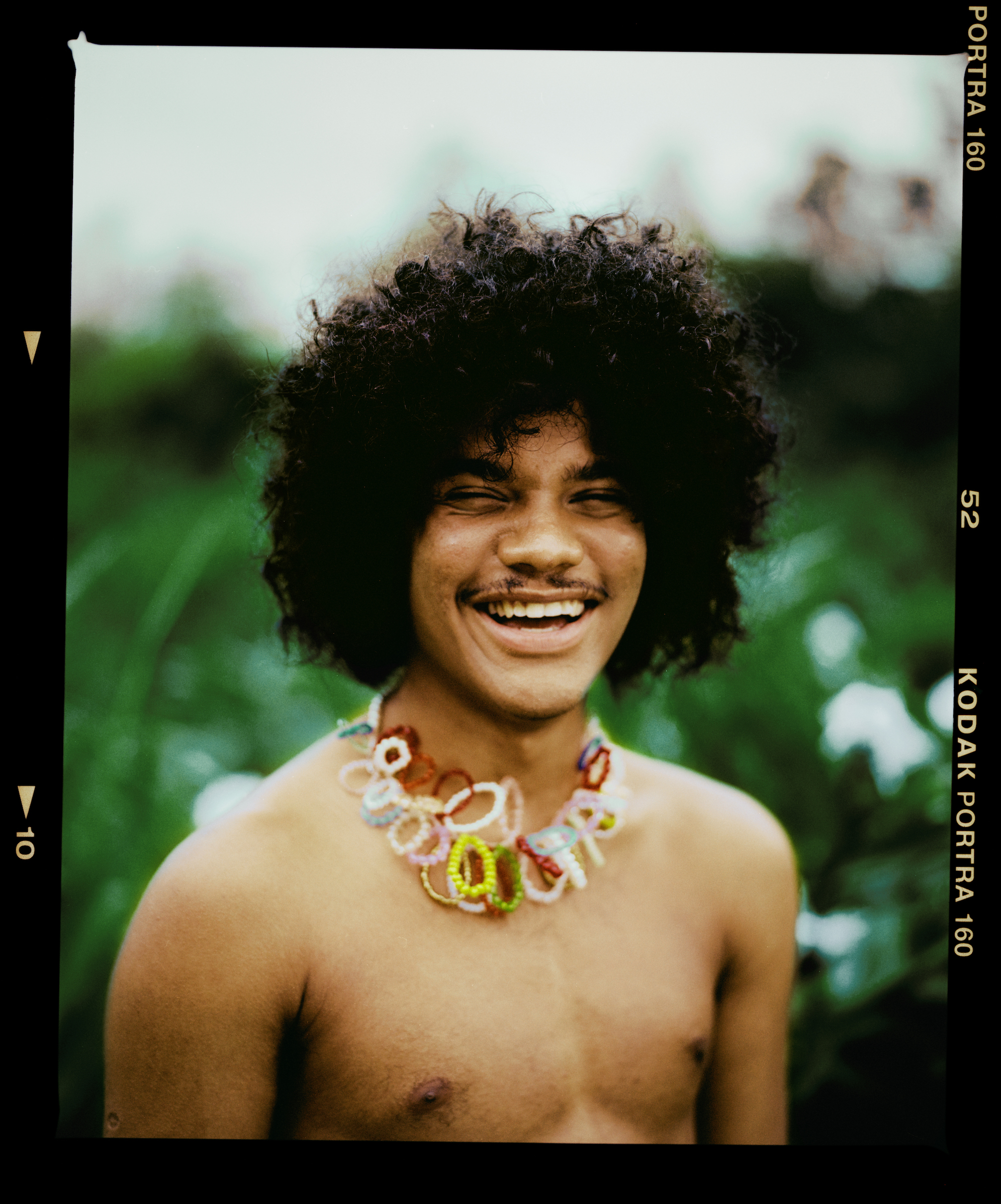Born in Totó a neighbourhood of Recife in Brazil, visual artist Samuel de Saboia began his creative journey at the tender age of 13. By 15 he attended an Architecture and Urbanism course that he left prematurely to pursue graphic design. Shortly before completing his graphic design course he decided to venture into the world of art and all that it had to offer. This transition must not have been an easy one as his parents who are very religious did not approve of their son’s love for art and in many ways showed their disapproval of his interest. His works were locked away, out of sight. Regardless Samuel sees “…art as a form of comfort, not confrontation.”
As a teenager experimenting with his artistic inclinations Samuel did not have access to the internet and took inspiration from an encyclopaedia. Words formed in his mind and from here he would look them up using the pictorial display in the volume as a point of departure for his mark making. “I painted other worlds, but always with familiar faces: I told the stories of my friends, my neighbours, mixed with my dreams and a little acid …I love the place I came from, not for the cultural reasons, but for the privilege of the rhythm. I would not be the same if I had grown up somewhere else,” he tells Vice.
Precipitous brushstrokes, self-motivated. What is left behind on canvas are traces of oil and acrylic broadening the spectrum of emotion on a flat surface. Dots, softening of texture takes hold. At 15 Samuel participated in his first group show at Casarão Venue in Recife. Since this initial show, his work has formed a part of various exhibitions across the globe including Paredão, CCSP (2017), The Skin I’m In, Space 776, New York (2018), and most recently his first solo in Brazil, at Emmathomas Gallery. The artist also forms a part of La Barraque Creative – a collective platform that connects artists to brands.

“…I see art in a spiritual way. It’s not just a drawing, a scribble, it’s a way of investigating what I’m going through and where I want to go,” he states in an interview with Folha De S. Paulo. His work becomes an attempt to reinvent living beings. Guttural mark making flares from works such as The Pajé and the Moon (2018) and Stellar Children (2018).
Beautiful Wounds drew from the murder of several friends in Recife and the artist expresses “It talks about love, violence, genocide, affection, security, stability and madness. Within each screen I died and was reborn…” in an interview with Vice.
Guardiões is as a pop-up exhibition debuted at Emmathomas gallery on 31 January 2019. The show explores the nature of angels, reuniting works that display different tendencies, curated by Ana Carolina Ralston.
Beings that traverse light and darkness, encompassing both wholes within themselves. Part messenger, part guardian. These beings from the New Testament can be loving as well as frightening. Ubiquitous beings.
“If angels are genderless why should we establish one?” asks the artist.

His personality is implicated by the duality of his expression. Recife becomes a major influence known for its lush vegetation and sunshine these colours correlate with the artist’s palette. Reds, yellows and greens meet symbolising creation and are contrasted with blue reflecting shadow – living in symbiosis. A fearless approach enables the artist to bring his life onto canvas without hesitation. Uniting spiritual and bodily feelings within, his personal freedom shines bright in works such as I Love You, I Love You, I Love You – a tapestry that reminds him of his mother’s weaving in the family home. Guardiões comprises of sculptural elements and attempts to bring the living into a new dimension of curve and malformed objects.
The young creative has had an expansive career and has already dabbled in fashion, video as well as hosted a blog where he featured young artists dealing with themes he is interested in such as queer identity, the Black body and youth culture. “I’m tired of black enslaved people represented in art, I want to see black faces sitting on the throne,” he expresses in an interview with Vice.
Speaking more to his expression in fashion he states, “Fashion appears in my work in the colour, texture and movement of the brushes, which for me are draped from a fabric that has been creating volume” (GQ Brazil).
Backlash from conservatives has not kept the artist from pushing forward despite the fact that there has been widespread controversy about his practice with remarks that it cannot be considered art. Samuel does not regard himself to fall under the rubric of classical art and expresses that he is unconcerned with the buzzwords of the genre. With conservatives attacking the visual auteur from his execution to his appearance, Samuel explains that “As a young man, black and bisexual, I am a political body,” in discussion with GQ Brazil.
Despite misgivings from his parents, Samuel sites that his life has always been consumed by art. Seeing it in the daily settings of his life; his mother sewing, his parents dancing together, an aunt who painted or fed ducks… Fuelling his nostalgia art blossomed from these settings. “Attachment and caring make me create, it is my first way of speaking, of creating and recreating moments,” he shares with Vice.
Credits:




















































